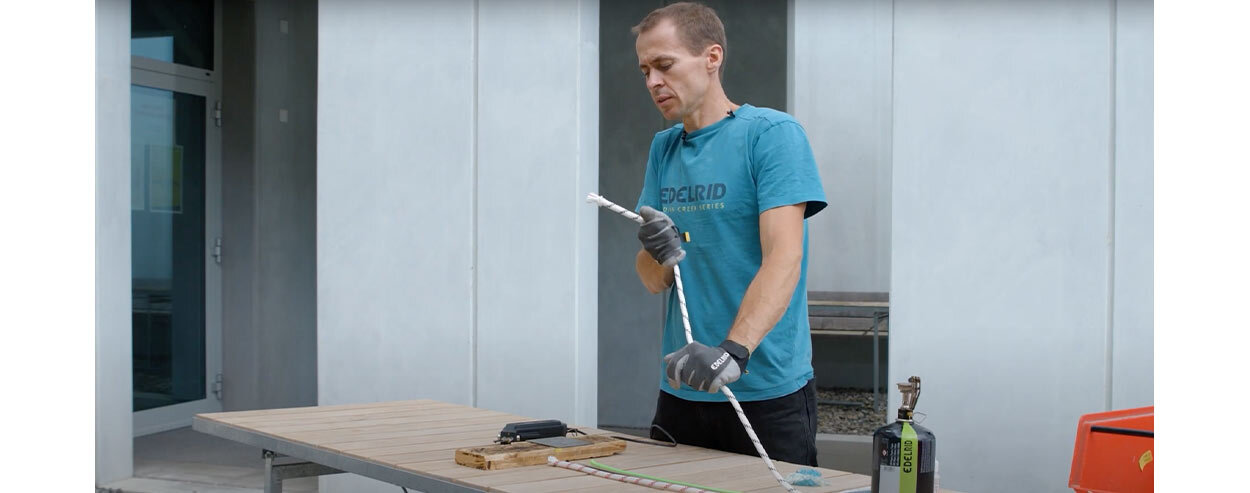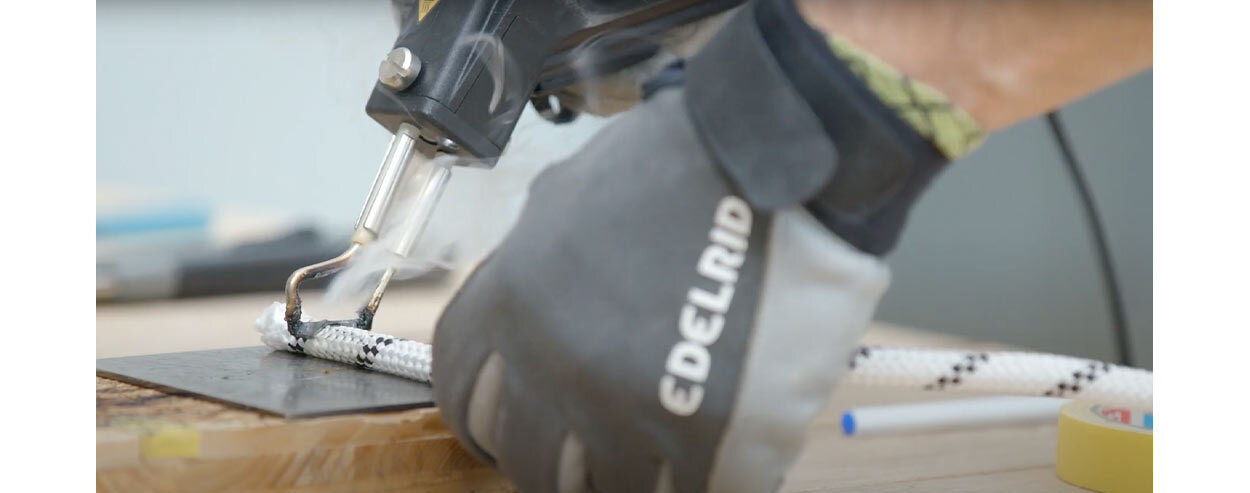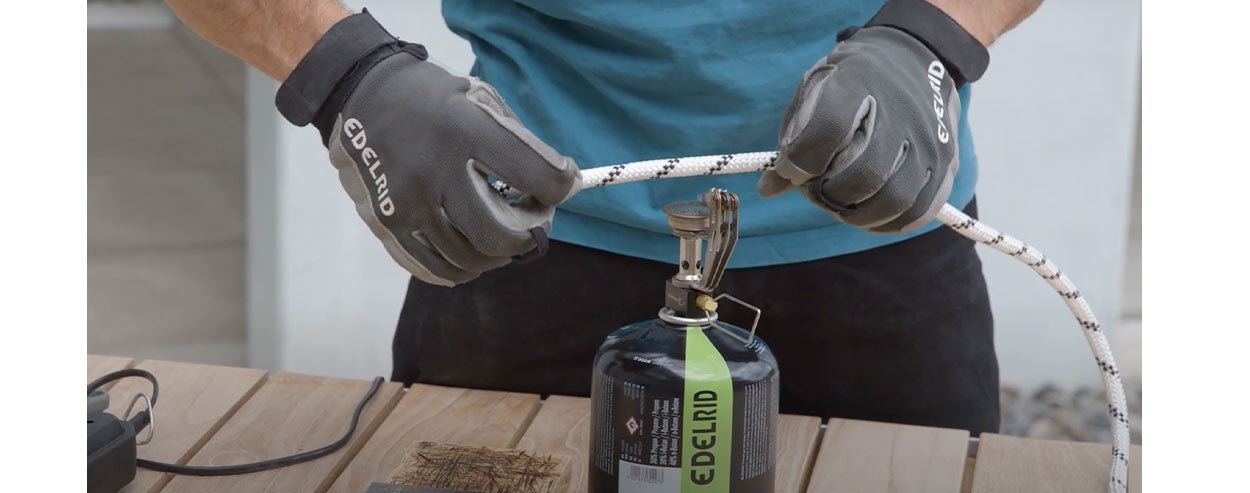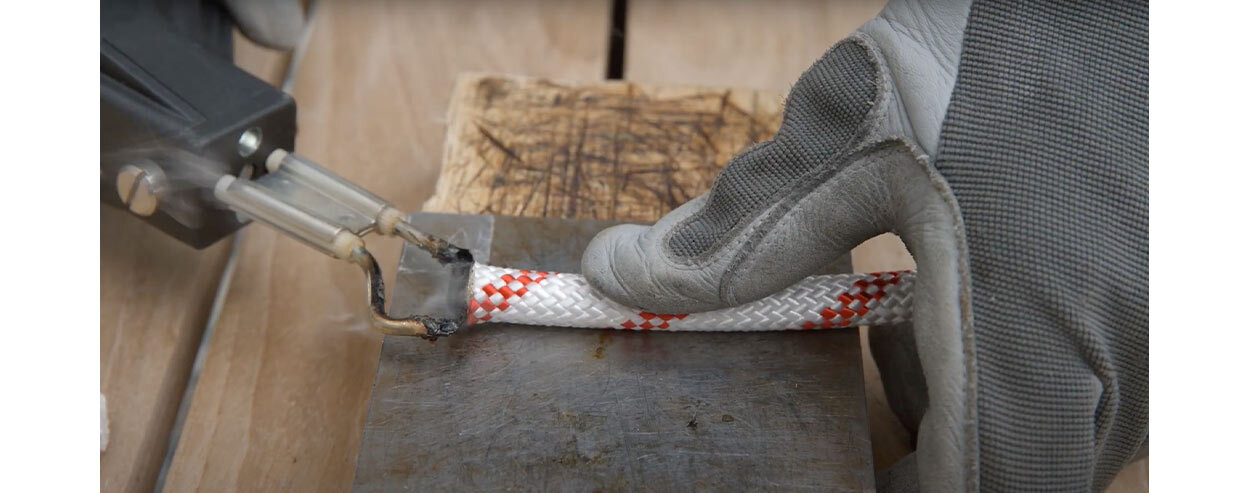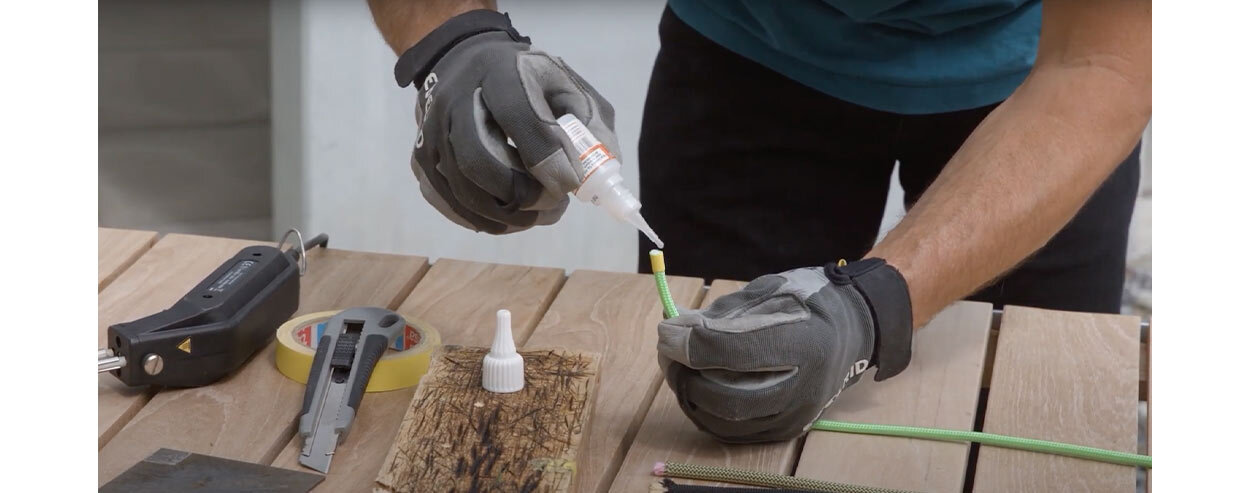PPE ropes for mountain sports and work safety uses are usually produced by the manufacturer with a specific length. During this process, the ends of the rope are ultrasonically welded and labeled.
In many practical applications, however, ropes and cords also have to be regularly cut by the users themselves. This Knowledge Base article explains how ropes are cut and, above all, how they can be permanently sealed to prevent them from fraying.
The work described below should be performed outdoors, with the use of extraction equipment, or, as a minimum, in well-ventilated rooms. When melting and bonding synthetic fibers, toxic vapors are generated that should not be inhaled. In addition, heat-resistant gloves, ideally thin leather gloves, should be worn. The work should also be performed on a heat-resistant surface.
The process of cutting a rope always starts with stripping the last meter of rope. This makes the sheath sit firmly on the core. If the core disappears into the sheath while stripping the rope, sufficient clearance must be left when making the cut to ensure that the entire core is available at the point where the cut is made.

